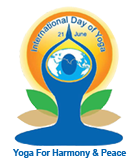| S.No | Country | Date and Year of Sign | Partner Agency | Areas of Cooperation | Major Accomplishments |
| 1 | USA | 24th Sept 2014 (The MoU expired in 2019, but activities are continued.) | University Corporation for Atmospheric Research (UCAR), USA | MoU for Cooperation in the field of Earth System Sciences. |
Resulted in development of an early warning system for Air Quality at Delhi (launched on 15 Oct 2018). The warning system also provides an air quality forecast for a few more cities in the northern region of India at 1 km resolution. Future plans will involve efforts to assimilate data from around 36 monitoring stations run by the Central Pollution Control Board (CPCB), Delhi Pollution Control Committee (DPCC), and System of Air Quality and Weather Forecasting and Research (SAFAR) and use it in Early warning system. Information from satellites on stubble burning in northwest India or dust storms along with the prevalent meteorological factors to be assimilated to improve the initial conditions of the dynamical chemistry transport model. |
| 2 | USA | 1st October 2013 (Initially the MoU was signed for five years till 30th Sept 2019 and later extended till 30th Sept 2024) | National Science Foundation, USA | MoU between the National Science Foundation (NSF) of the USA and the MoES concerning participation of India in the International Ocean Discovery Program (IODP) as a member of the JOIDES Resolution Consortium. |
Utilising the NSF drilling platform JOIDES RESOLUTION, Indian scientists got an opportunity to get hands-on experience with the marine geoscientific research platform, sediment coring and drilling. Around 30 Indian scientists from 13 various national organizations gained hands-on exposure in analyzing deep-sea sediment/hard cores. Also, India has Exclusive access to core samples within the moratorium period. |
| 3 | USA | October 23, 2020 (The MoU will remain effective for a period of 10 years) | National Oceanic and Atmospheric Administration (NOAA) USA | Scientific and technical cooperation in earth observations and earth sciences. |
To facilitating arrangements and understandings that lead to cooperation and coordination of activities and programs in Earth Observations and Earth Sciences. |
| 4 | USA | 1st Nov 2018. | United States Geological Survey (USGS), USA | MoU concerning Scientific and Technical Cooperation in Earth Science. |
The cooperation envisaged through various modes viz. exchange of technical information, visits, training, and cooperative research consistent with ongoing programs of both MoES and USGS. Which will include Tsunami modelling and coastal processes will be undertaken through various modes such as exchange of technical information, visits, training, and cooperative research consistent with ongoing programs of both MoES and USGS. Under this MoU the Ministry is also planning for joint collaborative work on development of Earthquake Early warning System for India as a pilot project.. |







 Ministry of Earth Sciences
Ministry of Earth Sciences














